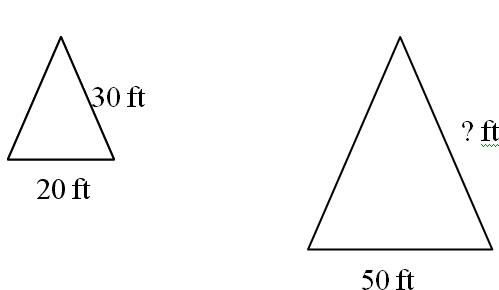Similar triangles are exactly the same as similar figures. You have to put one length of one triangle over the other length on that same triangle, equal to the length given on the similar triangle.
Quiz:
1. How tall is the tree below?
2. How do you set up a proportion?
3. How do you check if your answer is correct?
Answer key
1. The answer to the problem is that the tree is 20 meters tall. To get this you set up a proportion 2/3 X x/30 and you cross multiply these and get 3/60 and you divide that and end up with an answer of 20 meters tall.
2. To set one up you need to make a cross multiplication table numbers should go on both sides of the division line. ( / X / ) Once you do that you cross it and skip x and keep that number to divide it with the result of your other two numbers.
3. You can check you work by using common sense. All you need to do is look at the previous triangle and if it within a reasonable range your most likely right.
Commented on Franks blog.
Youtube video.








